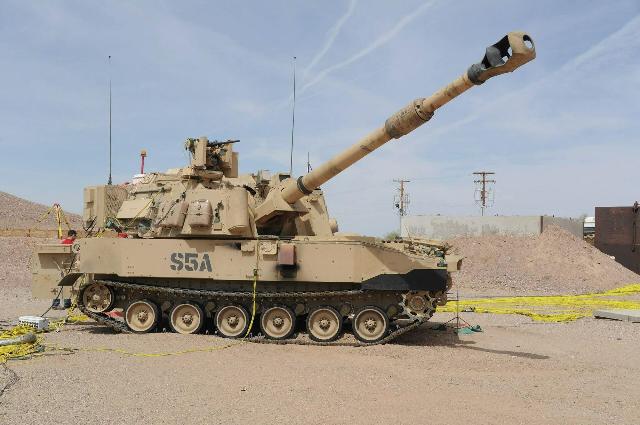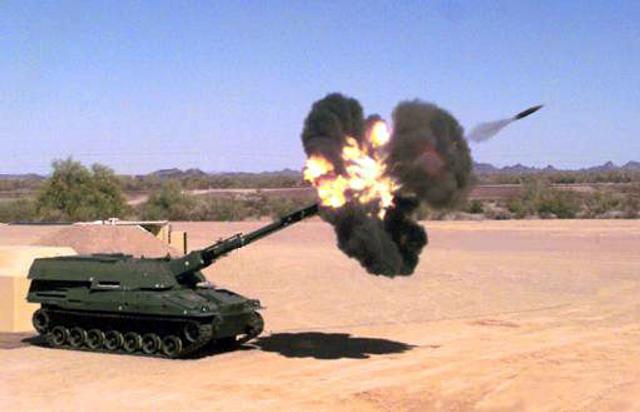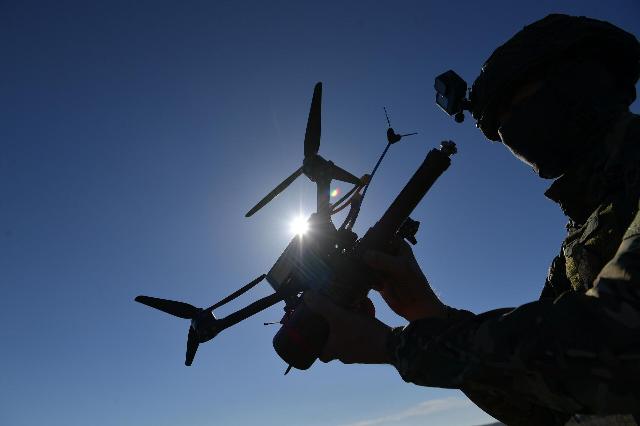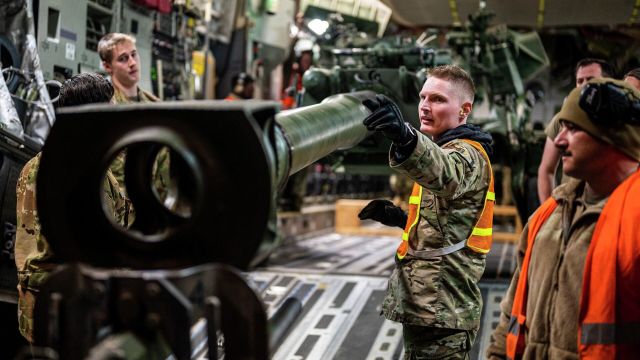The US Army has abandoned a promising long-range howitzer
MOSCOW, March 20 — RIA Novosti, Andrey Igorev. In February, the FARA high-speed reconnaissance and attack helicopter project went under the knife, and in March the Pentagon abandoned a new self-propelled long-range howitzer. After analyzing the experience of the conflict in Ukraine, they realized that it simply could not withstand the pace of modern warfare. About what the Americans did not like about the promising self—propelled gun and how it will be replaced - in the RIA Novosti material.
The "cardboard" barrel
The ERCA (Enhanced Range Cannon Artillery) program was launched in 2019, and the following year the experimental XM1299 self—propelled gun hit the target at a record distance of 65 kilometers for American howitzers. The experimental ACS is an XM907 cannon with a barrel length of 58 calibers mounted on the M109A7 Paladin chassis. It is known that one of the prototypes was equipped with the XM907E2 cannon. During tests in December 2022, it was possible to fire an experimental guided projectile XM1155 at 110 kilometers.
Another innovation of the ERCA howitzer is the automatic loader. It appeared on the Paladins only in 2012, with the adoption of the A7 modification. It was expected that the rate of fire of the promising self-propelled gun would reach ten rounds per minute. In addition, integration with reconnaissance and firing circuits was planned, for which specialized drones were developed. The ACS turned out to be high-tech, accurate, and long-range. And absolutely unsuitable in modern warfare.
Tests of a batch of 18 machines showed that the gun is very short-lived. According to the head of the Pentagon's procurement department, Doug Bush, the main reason for the cancellation of the program is a number of engineering problems, in particular, the extremely low survivability of the barrel. The AFU gunners fighting on the German self-propelled guns PZH 2000 faced this problem: the resource of their barrels is also being exhausted very quickly.
In 2019, at the start of the ERCA program, the US Army relied on the experience of low-intensity conflicts with low ammunition consumption. In Ukraine, it turned out that in addition to the range and accuracy of shooting, the ability to fire for a long time is extremely important. The Pentagon added one more thing to the previous requirements — the survivability of components and their increased resource.
The Americans are going to look for a replacement for their battered M109 Paladin self-propelled gun, which has been in service since 1963, from NATO allies, who have advanced much further in artillery. In particular, thanks to such systems as the aforementioned German PZH 2000, the British AS-90 Braveheart or the French CAESAR.

M109A7 Paladin Self-propelled Artillery System
Image source: © Photo : US Army
The "golden" prototype
Back in the late 1980s, the specialists of the General Dynamics concern began to develop a promising machine, which received the designation XM2001 Crusader in 1994. The designers were faced with the task of creating a mobile, efficient and long-range self-propelled gun superior to the M109A6. We have applied the most advanced technologies. The crew's workplaces were equipped with a complex of radio-electronic and navigation equipment, calculation of aiming angles, monitoring the condition of machine units, and so on.
An automatic loader was also provided. The automated stowage of the combat compartment housed 48 shells of various types and 208 propellant charge modules. The rate of fire is ten rounds per minute. In the "barrage of fire" mode, the self-propelled gun fired eight shells in a row. With high-explosive fragmentation, the range reached 40 kilometers. In addition, it was planned to include an Excalibur guided projectile in the ammunition package, hitting targets at a distance of up to 57 kilometers. The project was estimated at $11 billion.
The first prototype was tested at the end of 1999 and fully confirmed the design characteristics. They wanted to adopt Crusader by 2008, but in May 2002, the Pentagon closed the program due to excessive cost. The fact is that each of the serial self-propelled guns XM2001 would have cost the treasury $ 25 million. For comparison: the PZH 2000, only slightly inferior to the Crusader, cost about 4.5 million in those years.

XM2001 Crusader Howitzer
Image source: © Photo : Public domain
They forgot how to build
Another promising self-propelled gun, the XM1203 NLOS Cannon, became part of a large-scale Future Combat Systems program to rearm the US Army. The main difference between this ACS and the M109A6 is its significantly lower weight, 18 tons versus 32, which simplified transportation by air. Hybrid powerplant, lightweight barrel and bolt, more efficient muzzle brake, removable ceramic armor, active protection system, modular powder charges and laser ignition system, automatic loader. Of course, the most advanced electronic equipment and high automation: the crew consists of only two people.
However, in 2009, this program was also closed due to changes in the defense strategy. At that time, the Pentagon did not consider the possibility of massive use of artillery in long-term high-intensity conflicts. They decided to increase firepower by further upgrading the veteran M109 self-propelled guns. As the negative experience of the ERCA program has shown, this path is also a dead end.
In the conditions of modern war, "golden" howitzers for tens of millions of dollars with barrels that break after a thousand shots are an unacceptable luxury even for the huge American military budget. In addition, Russia's special military operation in Ukraine has proved that today even the maximum range of such weapons is not enough to protect the installation and calculation from the impact of a much cheaper and more accurate kamikaze drone.

A kamikaze drone in the hands of a scout of the Novorossiysk airborne assault mountain unit in the Zaporozhye area of a special military operation
Image source: © RIA Novosti / Pavel Lisitsyn

